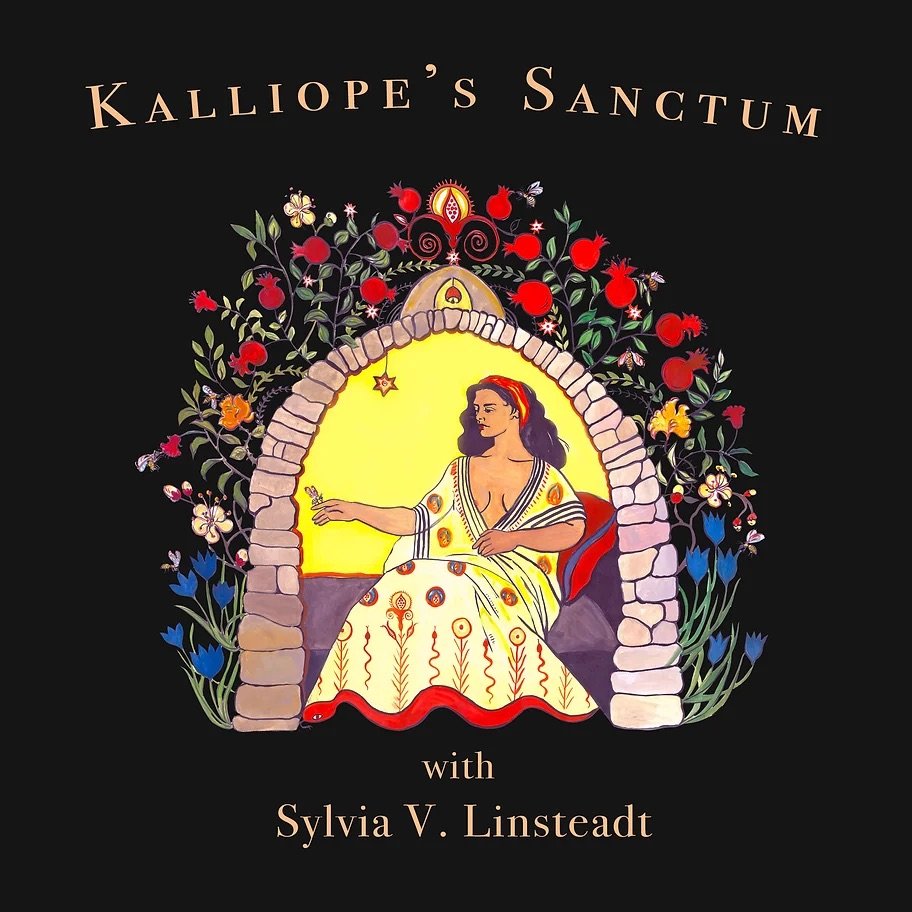Podcast
Kalliope's Sanctum
Welcome to Kalliope's Sanctum, a story podcast hosted by writer Sylvia V. Linsteadt. This podcast is dedicated to Kalliope, primordial and first Muse of epic poetry and ecstatic song in ancient Greece. This podcast is a place of sanctuary for her oldest stories.
It is a return to the wild garden, to the spring, to the ground of being & the source of inspiration in the Earth. Here, we honor Kalliope as Muse of Earth. Here, you will find some of the stories beneath the stories of Old Europe: short fictional/poetic pieces written and read by Sylvia that explore elements of indigenous Old European mythology (a term coined by the late archaeologist Marija Gimbutas), with a focus on pre-Hellenic (pre-Patriarchal) Greece.
Come sit with us in the honeyed light, among the ripe pomegranates, in Kalliope's sanctuary, where the stories that arise directly from the ground of being and lifeforce can still be safely told and celebrated. Come lean against the sun-warmed stones, with the fragrance of propolis & myrrh in the air, and the trees heavy with autumn quince. This is the garden before the fall, a sanctuary for all hearts in this time.
Join us, and be revived.
PODCAST SOUND EDITING | Simon Linsteadt
PODCAST ART | Catherine Sieck
PODCAST MUSIC | Antonis Leontidis | Cretan lyra composition from the album Krifo

